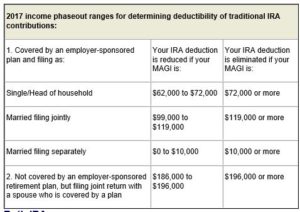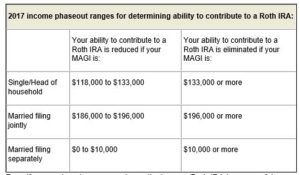The SECURE Act (Setting Every Community Up for Retirement Enhancement Act) is major legislation that was passed by Congress as part of a larger spending bill and signed into law by the president in December. Here are a few provisions that may affect you. Unless otherwise noted, the new rules apply to tax or plan years starting January 1, 2020.
If you’re still saving for retirement
To address increasing life expectancies, the new law repeals the prohibition on contributions to a traditional IRA by someone who has reached age 70½. Starting with 2020 contributions, the age limit has been removed, but individuals must still have earned income.
If you’re not ready to take required minimum distributions
Individuals can now wait until age 72 to take required minimum distributions (RMDs) from traditional, SEP, and SIMPLE IRAs and retirement plans instead of taking them at age 70½. (Technically, RMDs must start by April 1 of the year following the year an individual reaches age 72 or, for certain employer retirement plans, the year an individual retires, if later).
If you’re adding a child to your family
Workers can now take penalty-free early withdrawals of up to $5,000 from their qualified retirement plans and IRAs to pay for expenses related to the birth or adoption of a child. (Regular income taxes still apply.)
If you’re paying education expenses
Individuals with 529 college savings plans may now be able to use account funds to help pay off qualified student loans (a $10,000 lifetime limit applies per beneficiary or sibling). Account funds may also be used for qualified higher-education expenses for registered apprenticeship programs. Distributions made after December 31, 2018, may qualify.*
If you’re working part-time
Part-time workers who log at least 500 hours in three consecutive years must be allowed to participate in a company’s elective deferral retirement plan. The previous requirement was 1,000 hours and one year of service. The new rule applies to plan years beginning on or after January 1, 2021.
If you’re an employer offering a retirement plan
Employers that offer plans with an automatic enrollment feature may automatically increase employee contributions until they reach 15% of pay (the previous cap was 10% of pay). Employees will have the opportunity to opt out of the increase.
Small employers may also benefit from new tax credit incentives. The tax credit that small businesses may take for starting a new retirement plan has increased. Employers may now take a credit equal to the greater of (1) $500 or (2) the lesser of (a) $250 times the number of non-highly compensated eligible employees or (b) $5,000. The previous maximum credit amount allowed was 50% of startup costs up to a maximum of $1,000 (i.e., a $500 maximum credit).
In addition, a new tax credit of up to $500 is available to employers that launch a new SIMPLE IRA or 401(k) plan with automatic enrollment.
These credits are available for three years, and employers that qualify may claim both credits.
*There are generally fees and expenses associated with 529 savings plan participation. Investments may lose money or not perform well enough to cover college costs as anticipated. Investment earnings accumulate on a tax-deferred basis, and withdrawals are tax-free if used for qualified higher-education expenses. For withdrawals not used for qualified higher-education expenses, earnings may be subject to taxation as ordinary income and possibly a 10% federal income tax penalty. Discuss the tax implications of a 529 savings plan with your legal and/or tax advisors; these can vary significantly from state to state. Most states offer their own 529 plans, which may provide advantages and benefits exclusively for residents and taxpayers, including financial aid, scholarship funds, and protection from creditors.
Before investing in a 529 savings plan, consider the investment objectives, risks, charges, and expenses carefully. Obtain the official disclosure statements and applicable prospectuses — which contain this and other information about the investment options, underlying investments, and investment company — from your financial professional. Read these materials carefully before investing.
If you have questions or would like more information
please contact Frank
Representatives are registered through, and securities are sold through Nationwide Planning Associates, Inc., Member FINRA/SIPC, located at 115 West Century Road, Suite 360, Paramus, NJ 07652. Investment advisory services are offered through NPA Asset Management, LLC. Insurance sold through licensed NPA Insurance Agency, Inc. agents. Nationwide Planning Associates, Inc. and Frankly Financial are non-affiliated entities.
This communication is strictly intended for individuals residing in the state(s) of CO, CT, FL, NJ, NY, NC, OH, PA and RI. No offers may be made or accepted from any resident outside the specific states referenced.
Prepared by Broadridge Advisor Solutions Copyright 2020.





 What are the benefits of either course of action? If you do neither and simply ‘cash out’, what are the tax implications?
What are the benefits of either course of action? If you do neither and simply ‘cash out’, what are the tax implications?